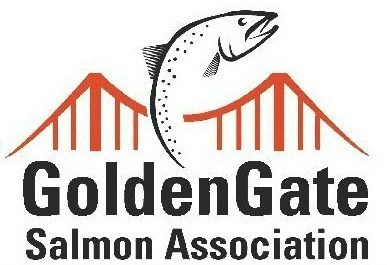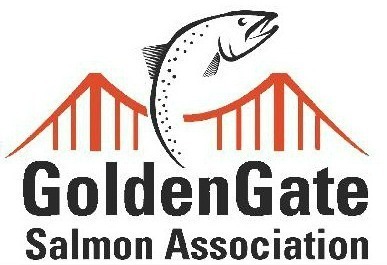Utah Fish Report
Fish Report for 2-29-2016
Fish Report for 2-29-2016
2016 Salmon Projection Down Due to Drought, Water Mismanagement

by Michael Coats
2-29-2016
Website
San Francisco, CA -- The Pacific Fisheries Management Council (PFMC) forecasts 299,600 Sacramento River adult fall run king salmon are in the ocean off the California and Oregon coast. This compares to forecasts above 600,000 the last several years. When coupled with poor 2015 Klamath salmon returns and concern for federally protected winter run, the forecast points to a restricted 2016 fishing season. The lower than normal forecast is caused by drought conditions and water management decisions that harmed salmon the last four years in the Central Valley. These have greatly decreased survival of wild salmon eggs and juveniles. The relatively low forecast for 2016 salmon comes as two federal bills in Congress threaten to take even more of the water needed to keep our salmon runs healthy.
“The projection for 2016 salmon makes clear the damage done by water diversions and drought the last several years. The 2016 salmon number means more protections are needed in the Delta and Central Valley salmon habitat, not less,” said GGSA executive director John McManus. “Any politician proposing more water diversions now from the Delta needs to look at the salmon numbers and stop proposing more harm to salmon and our coastal communities.”
The PFMC forecast comes as fishery managers begin work on an ocean fishing season in 2016 with adequate protections for low numbers of winter run and Klamath salmon. A low projected number of adult Klamath River salmon, which is used as a surrogate to protect north coast stocks, could mean further restrictions will occur on salmon fishing north of Point Arena in what’s known as the Fort Bragg cell. This is most likely to affect commercial salmon fishermen who have made the bulk of their catch in this area the last several years. Fishery managers will brief California salmon fishermen March 2 in Santa Rosa and take input on what types of restrictions might be least damaging to the fishery.
The 2016 forecast is based on the number of sub adult salmon that returned to spawn in 2015. The 2015 forecast of 652,000 salmon didn’t come near the post season total of less than 300,000 prompting managers to modify the formula used to forecast this year’s number. One semi bright spot is that salmon fishing in 2016 should be a little bit better than it was last year due to the extra trucking that occurred in 2014 following a campaign by GGSA to avert drought disaster. Salmon numbers could creep up a little more in 2017 due to the 100 percent trucking of juvenile hatchery fish at GGSA’s urging in 2015. An additional two million hatchery fish produced after a GGSA campaign with state officials and support from the Commercial Salmon Stamp committee will be released in the next several months and are expected to add to the 2018 fishery.
“We’d almost certainly be looking at a fishing closure in 2016 but for the work of GGSA that got more hatchery fish trucked to safe release sites starting in 2014,” said GGSA founder and treasurer Victor Gonella. “The trucking made the difference in survival for many of the fish now out in the ocean. The forecast isn’t great but it should allow for a responsible fishing season while leaving enough fish to reproduce this year.”
Commercial salmon fishermen are coming off a very poor 2015 fishing season followed by a shutdown of the crab fishery, which most rely on to make ends meet. Prospects of another poor commercial salmon season is causing concern in harbors and ports from Morro Bay all the way up into Oregon where 60 percent of the ocean salmon catch are Central Valley salmon.
The Golden Gate Salmon Association (www.goldengatesalmonassociation.org) is a coalition of salmon advocates that includes commercial and recreational salmon fisherman, businesses, restaurants, a native tribe, environmentalists, elected officials, families and communities that rely on salmon. GGSA’s mission is to protect and restore California’s largest salmon producing habitat comprised of the Central Valley river’s that feed the Bay-Delta ecosystem and the communities that rely on salmon as a long-term, sustainable, commercial, recreational and cultural resource.
Currently, California’s salmon industry is valued at $1.4 billion in economic activity annually and about half that much in economic activity and jobs again in Oregon. The industry employs tens of thousands of people from Santa Barbara to northern Oregon. This is a huge economic bloc made up of commercial fishermen, recreational fishermen (fresh and salt water), fish processors, marinas, coastal communities, equipment manufacturers, the hotel and food industry, tribes, and the salmon fishing industry at large.
“The projection for 2016 salmon makes clear the damage done by water diversions and drought the last several years. The 2016 salmon number means more protections are needed in the Delta and Central Valley salmon habitat, not less,” said GGSA executive director John McManus. “Any politician proposing more water diversions now from the Delta needs to look at the salmon numbers and stop proposing more harm to salmon and our coastal communities.”
The PFMC forecast comes as fishery managers begin work on an ocean fishing season in 2016 with adequate protections for low numbers of winter run and Klamath salmon. A low projected number of adult Klamath River salmon, which is used as a surrogate to protect north coast stocks, could mean further restrictions will occur on salmon fishing north of Point Arena in what’s known as the Fort Bragg cell. This is most likely to affect commercial salmon fishermen who have made the bulk of their catch in this area the last several years. Fishery managers will brief California salmon fishermen March 2 in Santa Rosa and take input on what types of restrictions might be least damaging to the fishery.
The 2016 forecast is based on the number of sub adult salmon that returned to spawn in 2015. The 2015 forecast of 652,000 salmon didn’t come near the post season total of less than 300,000 prompting managers to modify the formula used to forecast this year’s number. One semi bright spot is that salmon fishing in 2016 should be a little bit better than it was last year due to the extra trucking that occurred in 2014 following a campaign by GGSA to avert drought disaster. Salmon numbers could creep up a little more in 2017 due to the 100 percent trucking of juvenile hatchery fish at GGSA’s urging in 2015. An additional two million hatchery fish produced after a GGSA campaign with state officials and support from the Commercial Salmon Stamp committee will be released in the next several months and are expected to add to the 2018 fishery.
“We’d almost certainly be looking at a fishing closure in 2016 but for the work of GGSA that got more hatchery fish trucked to safe release sites starting in 2014,” said GGSA founder and treasurer Victor Gonella. “The trucking made the difference in survival for many of the fish now out in the ocean. The forecast isn’t great but it should allow for a responsible fishing season while leaving enough fish to reproduce this year.”
Commercial salmon fishermen are coming off a very poor 2015 fishing season followed by a shutdown of the crab fishery, which most rely on to make ends meet. Prospects of another poor commercial salmon season is causing concern in harbors and ports from Morro Bay all the way up into Oregon where 60 percent of the ocean salmon catch are Central Valley salmon.
The Golden Gate Salmon Association (www.goldengatesalmonassociation.org) is a coalition of salmon advocates that includes commercial and recreational salmon fisherman, businesses, restaurants, a native tribe, environmentalists, elected officials, families and communities that rely on salmon. GGSA’s mission is to protect and restore California’s largest salmon producing habitat comprised of the Central Valley river’s that feed the Bay-Delta ecosystem and the communities that rely on salmon as a long-term, sustainable, commercial, recreational and cultural resource.
Currently, California’s salmon industry is valued at $1.4 billion in economic activity annually and about half that much in economic activity and jobs again in Oregon. The industry employs tens of thousands of people from Santa Barbara to northern Oregon. This is a huge economic bloc made up of commercial fishermen, recreational fishermen (fresh and salt water), fish processors, marinas, coastal communities, equipment manufacturers, the hotel and food industry, tribes, and the salmon fishing industry at large.
More Reports
GGSA Responds to Twin Tunnels Comment

2-23-2016
In a recent Fox News report, http://www.foxnews.com/us/2016/02/22/critics-calif-water-tunnel-project-claim-its-govt-waste-to-save-tiny-smelt.html Critics of California water-tunnel project claim it's gov't waste to save tiny smelt,...... Read More
Release of 210,000 Winter Run Salmon in Redding
Sacramento River
2-17-2016
“In 2014 and 2015 decisions made by federal water managers with agreement from federal fish agencies led to the decimation...... Read More

www.UtahFishReports.com © 2025. All Rights Reserved.
Website Hosting and Design provided by TECK.net
Website Hosting and Design provided by TECK.net